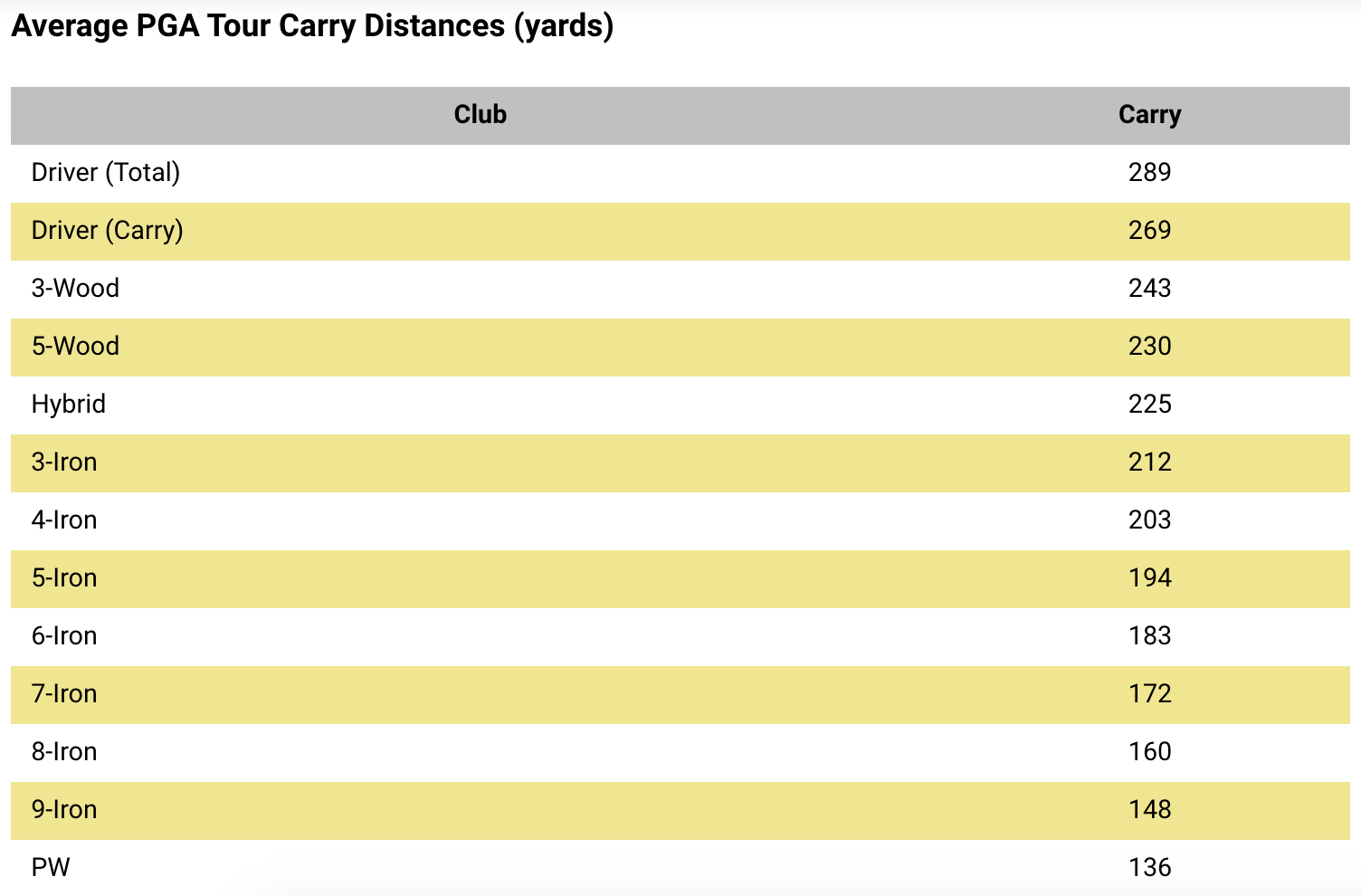Golf fans are used to doing double-takes during broadcasts of the PGA Tour when announcers proclaim a pro is hitting a mid-iron from some absurd distance into a green.
While there are a myriad of extenuating circumstances at play that allow Rory McIlroy or Dustin Johnson to hit a 7-iron 220 yards on occasion, the actual Tour-pro club averages are much more digestible, and as GolfWRX.com’s Jaacob Bowden deciphered, able to be applied to amateur golfers of varying swing speeds.
The advent of launch monitor technology has made understanding the game a much more binary endeavor, putting numerical data together to create a fuller perspective. And as long as the game has been around, how far the ball goes has always been of massive importance to the player, both for egotistical and game-improvement reasons.

According to Bowden’s analysis, the average PGA Tour pro is able to squeeze about 2.58 yards/mph of swing speed with their driver. Using that baseline metric, Bowden was able to extrapolate the data to give you an idea of how far you should be carrying each club in your bag based upon your swing speed.
The average PGA Tour swing speed with a driver is about 112-113 mph, but that number is significantly lower for amateurs depending on a wide variety of factors, not the least of which is age.
Take a look at the chart below and see about where your average carry distances fall. If you’re not sure of your swing speed, this could give you a good barometer to be verified by hitting on a Trackman or Flightscope during your next visit to a PGA professional or golf retailer.

There are a few takeaways from this, as pointed out by Bowden:
- Optimizing your equipment setup — from irons all the way up to driver — can lead to increases (or decreases) in distance based on how well your clubs are fit to your individual swing.
- These are average distances, not the farthest you’ve ever hit a certain iron, which, as PGA Tour pro Max Homa pointed out recently, may be the biggest lie perpetrated by amateur golfers.
- Conditions matter, perhaps more than you’d think. Slopes, wind, temperature, altitude, etc. all affect how far a ball will fly. Keep that in mind as these averages were calculated using a Doppler radar system that can simulate these distances based on h0w far the ball goes in a dome-like atmosphere.
- Not all club lofts are created equally. The 7-iron in your set of irons from 2010 is likely much weaker (read: higher-lofted) than a 7-iron in a set made in 2020. This is a marketing ploy equipment manufacturers use to sell golfers on more distance. Pros are typically using the latest and greatest, so it’s fair to assume their lofts are stronger than the ones in your bag.
- Lastly, the slower your swing speed gets, the more aware you should be, especially if looking to save a few bucks on clubs. As you drop below 90 mph swing speed, your carry distance start to cluster a bit. Consider purchasing less than 14 clubs if your finding that multiple clubs go similar distances.




